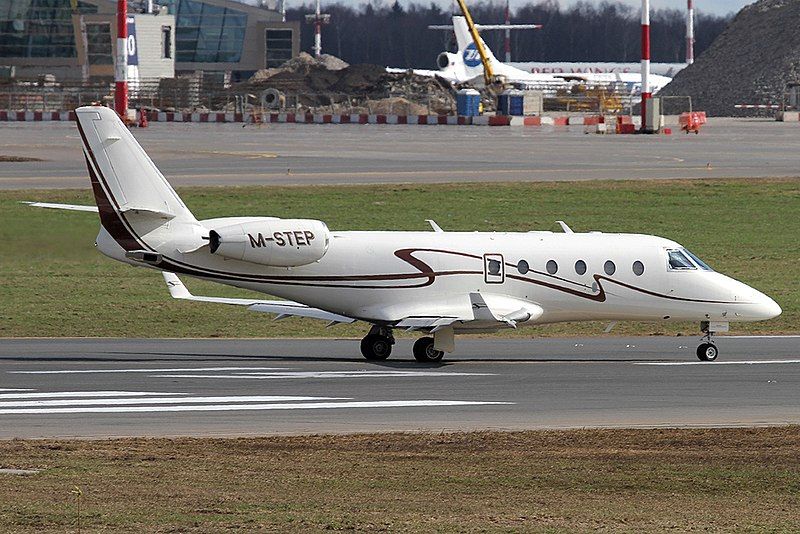The Gulfstream G150 is one of the fastest private jets in its class. Based on the company’s G100 aircraft, Gulfstream announced the G150 in September 2002. The improved aircraft has a larger cabin (in terms of size and volume), an increased Maximum Takeoff Weight (MTOW), and improved avionics and other systems.
The aircraft has an MTOW of 26,100 lb (11,800 kg) compared to the 24,650 lb (11,180 kg) MTOW of the G100. The manufacturer aimed to provide a newer fuel-efficient alternative to the private/business jet market. The acoustic insulation technology of the G150 was also implemented in future models to achieve quieter cabins.
The Gulfstream G150
With many new jets in the market in recent years, Gulfstream intended to replace its G100 aircraft with a technologically advanced plane that can fly faster, has more range, and is more comfortable for passengers. The carrier set out to develop an aircraft that can seat between 6 and 9 passengers and is operated by two crew members.
Powered by two Honeywell TFE731 turbofan engines, the aircraft can fly a range of nearly 2,950 nautical miles (3,394 miles, 5,465 km). The aircraft has a maximum speed of Mach 0.875, which is somewhat unusual for similar-sized jets. The aircraft has a cruise speed of 484 knots (557 mph, 896 km/h). Gulfstream ended the production of the G100 after the G150 was launched.
Cabin features
The company produced more than 120 examples of the G150 between then and 2017, when it delivered the final aircraft. The aircraft features a state-of-the-art cabin that can be configured in various ways depending on the customer’s requirements. Large oval cabin windows, LED lighting, spacious meeting rooms, and seating are some of the critical characteristics of the G150 cabin.
Gulfstream offered three different cabin layouts to choose from. The configurations can accommodate 6-8 passengers with differing galley sizes. The Vice President of the cabin programs at Gulfstream, Stan Dixon, commented about the improved cabin of the G150 by stating,
“The model has the highest mission availability rate of any Gulfstream. Given that the company consistently rates number one in product support, that’s saying a lot. The highest-time G150 currently has flown 8,000 hours, and several customers use it as a shuttle, taking off and landing 10 to 12 times a day. And a few fly these marathon hours without an in-house maintenance department.”
Digitally-operated engines
The Honeywell engines made the aircraft quieter and more fuel-efficient compared to its predecessors. The aircraft also features a Full Authority Digital Engine Control (FADEC), a controller primarily relying on electrical signals instead of traditional mechanical and pneumatic controls.
Like most small and mid-sized aircraft, the fuel tank is located in the fuselage tank aft of the baggage hold. This became one of the challenges for the design, limiting the aircraft to fly with its total allowable load while still operating within the center-of-gravity envelope. While some aircraft applications did not require maximum payload, the issue led to limited sales for the type.
What are your thoughts on the Gulfstream G150 design and its operability in the mid-size private jet market? Have you traveled with a private jet? Share your opinion/experience in the comments section.
Source: Business Jet Traveler


